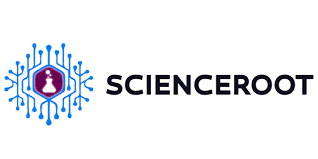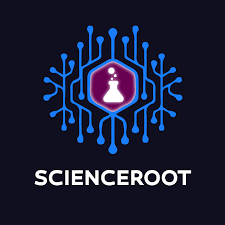Scienceroot: Scientific Collaboration with Blockchain
Table of Contents

Imagine a world where scientific research is seamlessly funded, collaboratively conducted, and transparently published—all powered by blockchain technology. Scienceroot is making this a reality. By addressing challenges in traditional research methodologies, Scienceroot offers a decentralized platform that fosters global scientific advancement.
For more insights and updates on the latest trends in crypto, be sure to check out our Nifty Finances platform, which is your gateway to smarter financial decisions in the digital economy.

What is Scienceroot (ST)?
Scienceroot (ST) is a blockchain-powered ecosystem that revolutionizes the scientific research industry. By integrating decentralization, transparency, and collaboration, Scienceroot aims to remove barriers in traditional academic publishing and funding, making scientific knowledge more accessible and rewarding for researchers worldwide.
Scienceroot provides a blockchain-based platform where scientists can publish research, collaborate globally, and receive funding without relying on expensive journals or intermediaries. The system ensures fair recognition and distribution of contributions, addressing the inefficiencies of the traditional research model.
The Role of ST Tokens
The Scienceroot Token (ST) is the backbone of this ecosystem. It serves multiple purposes, including:
- Funding Research: Scientists can crowdfund projects using ST tokens, reducing dependency on centralized grants.
- Incentivizing Peer Review: Reviewers receive ST tokens for their contributions, ensuring quality and integrity in the evaluation process.
- Rewarding Contributions: Researchers, authors, and collaborators are fairly compensated through tokenized incentives.
Using blockchain technology, Scienceroot guarantees data immutability, secure transactions, and verifiable research records. This enhances trust in the scientific process by preventing data manipulation, plagiarism, and biased funding practices.
Scienceroot envisions a global research community where scientists can freely share ideas, collaborate efficiently, and receive fair rewards. By eliminating financial and geographical constraints, it empowers researchers of all backgrounds to contribute to scientific advancement.
With ST tokens at its core, Scienceroot is pioneering a decentralized, transparent, and accessible future for scientific research.

The Vision Behind Scienceroot: Revolutionizing Scientific Research with Blockchain
Scientific research has long been plagued by inefficiencies—high publishing costs, limited collaboration, and lack of transparency. Scienceroot aims to change this by leveraging blockchain technology to create a decentralized ecosystem for researchers worldwide.
Addressing Inefficiencies in Traditional Research
The current academic publishing system is dominated by expensive journals, paywalls, and slow peer-review processes. Researchers often struggle with visibility, funding, and fair recognition for their work. Scienceroot eliminates these barriers by offering an open-access platform where scientists can publish, share, and collaborate without intermediaries.
Blockchain for Transparency and Collaboration
By utilizing blockchain, Scienceroot ensures that research data, publications, and peer reviews are immutable and publicly verifiable. Smart contracts facilitate secure funding through decentralized grants, while tokenized incentives reward contributors, reviewers, and collaborators fairly. This system not only fosters integrity but also accelerates innovation by making scientific knowledge freely accessible.
Empowering Researchers Worldwide
Scienceroot democratizes science by providing decentralized tools that connect researchers globally. Whether through crowdfunding research projects, sharing raw data transparently, or collaborating on blockchain-based smart contracts, scientists can work without geographical or financial constraints.
By integrating blockchain into the scientific ecosystem, Scienceroot envisions a future where research is open, fair, and driven by collaboration rather than corporate interests. This is the next step toward a more efficient, transparent, and inclusive scientific community.
Key Features
Scienceroot is a blockchain-based platform designed to revolutionize scientific research by addressing major inefficiencies in funding, collaboration, and publishing. By leveraging decentralization, Scienceroot empowers researchers worldwide with transparent and efficient tools to advance science. Below are the key features that make Scienceroot a game-changer in the academic world.
Decentralized Funding Mechanisms: Streamlining Research Grants and Funding
One of the biggest challenges researchers face is securing funding. Traditional grant systems are often bureaucratic, slow, and highly competitive, limiting opportunities for many talented scientists. Scienceroot introduces a decentralized funding model that enables researchers to access financial support without relying on traditional institutions.
Using blockchain and smart contracts, scientists can create crowdfunding campaigns where individuals, organizations, and institutions can contribute directly. The Scienceroot Token (ST) facilitates seamless transactions, ensuring that funds are distributed fairly and transparently. This model reduces administrative overhead, minimizes bias in funding decisions, and allows researchers to focus on their work rather than navigating complex grant applications.
Collaborative Research Environment: Facilitating Global Partnerships Among Scientists
Scientific progress thrives on collaboration, yet researchers often face geographical and institutional barriers that limit teamwork. Scienceroot removes these obstacles by providing a decentralized platform where scientists from around the world can connect, share ideas, and work together.
Through blockchain’s immutable record-keeping, research contributions are securely logged, ensuring proper attribution and recognition for all collaborators. Smart contracts further enhance teamwork by automating agreements, distributing rewards, and managing intellectual property rights without intermediaries.
By fostering an open and inclusive research environment, Scienceroot accelerates innovation and enables interdisciplinary breakthroughs that would be difficult in traditional siloed systems.
Transparent Publishing: Ensuring Open Access and Reproducibility of Research Findings
The current academic publishing system is riddled with high costs, lengthy peer-review processes, and restricted access due to paywalls. Scienceroot disrupts this outdated model by offering a fully decentralized publishing platform that ensures research findings are open, accessible, and reproducible.
Key benefits of Scienceroot’s publishing system include:
- Open Access: Research papers, datasets, and peer reviews are stored on the blockchain, making them permanently accessible to the public.
- Immutable Records: Every publication and review is timestamped and cannot be altered, ensuring credibility and integrity.
- Decentralized Peer Review: Reviewers are incentivized with ST tokens to provide high-quality, unbiased evaluations, reducing delays and conflicts of interest.
By making scientific knowledge freely available and verifiable, Scienceroot promotes transparency and speeds up the dissemination of discoveries, ultimately benefiting the global research community.
Scienceroot is redefining the way scientific research is funded, conducted, and shared. Through decentralized funding, seamless collaboration, and transparent publishing, it removes barriers that have long hindered progress in academia. By embracing blockchain technology, Scienceroot empowers researchers with the tools they need to innovate, collaborate, and contribute to a more open and efficient scientific ecosystem.
As the platform continues to evolve, it has the potential to transform the research landscape, making science more inclusive, accessible, and impactful for future generations.

Understanding the Science Token (ST)
The Science Token (ST) is the native cryptocurrency of the Scienceroot platform, designed to power a decentralized ecosystem for researchers, scientists, and academic professionals. By integrating blockchain technology, ST facilitates seamless transactions, incentivizes contributions, and ensures transparency in scientific research. Below, we explore the key aspects of the Science Token, including its role, acquisition, and market outlook.
Role and Utility: Facilitating Transactions Within the Scienceroot Ecosystem
ST serves as the backbone of the Scienceroot ecosystem, enabling a wide range of transactions and interactions between users. Some of its primary functions include:
- Funding Research: Researchers can use ST to crowdfund their projects, allowing the global scientific community and private investors to support groundbreaking discoveries. This removes dependence on traditional grant systems, which are often slow and bureaucratic.
- Publishing and Peer Review: The platform rewards scientists and reviewers with ST tokens for publishing research papers and conducting peer reviews. This system incentivizes high-quality, transparent, and unbiased scientific contributions.
- Collaboration and Intellectual Property: ST facilitates smart contract agreements between researchers, ensuring fair attribution, funding distribution, and intellectual property rights.
- Access to Premium Features: Users can utilize ST tokens to access exclusive platform features, such as advanced research tools, enhanced data storage, and priority publishing services.
By integrating ST within the Scienceroot ecosystem, the platform fosters a self-sustaining and decentralized scientific environment, ensuring that researchers are fairly rewarded for their contributions.
Acquisition and Use: Participating in Platform Services and Incentives
Acquiring ST is straightforward, and there are multiple ways to earn or purchase tokens:
Ways to Acquire ST Tokens
- Crowdfunding and Grants: Researchers who successfully raise funds through the platform receive ST tokens as part of their funding.
- Publishing and Peer Reviews: Scientists earn ST for contributing research articles and reviewing submissions from their peers.
- Bounties and Challenges: The platform occasionally offers token rewards for solving scientific problems, participating in research challenges, or developing tools for the community.
- Exchanges: Users can buy ST from cryptocurrency exchanges where it is listed, allowing them to trade, invest, or use tokens within the ecosystem.
How ST Tokens Are Used
- Transaction Fees: Some services on the Scienceroot platform may require small ST payments, ensuring the sustainability of the ecosystem.
- Staking for Governance: Token holders may have governance rights, allowing them to vote on platform upgrades, funding allocations, and policy changes.
- Research and Development: Scientists can use ST tokens to pay for data storage, computational resources, and collaboration tools needed for research projects.
By creating multiple use cases for ST, Scienceroot ensures long-term demand and utility, making it an integral part of the decentralized scientific community.
Market Performance: Current Status and Future Prospects of ST
Current Status
As a relatively new digital asset, the Science Token’s market performance depends on factors such as adoption, exchange listings, and overall interest in decentralized research solutions. While early investors and researchers have shown interest, widespread adoption is necessary for long-term value appreciation.
The token’s liquidity and price volatility are influenced by:
- Exchange Listings: More listings on major exchanges can improve accessibility and trading volume.
- Partnerships: Collaborations with universities, research institutions, and blockchain projects can boost credibility and demand.
- Platform Adoption: Increased usage of Scienceroot services will drive organic demand for ST tokens.
Future Prospects
The future of ST depends on the growth of the Scienceroot platform and its ability to disrupt traditional academic systems. Key developments that could enhance ST’s value include:
- Expanded Research Funding: As more researchers seek decentralized funding options, the demand for ST is likely to rise.
- Increased Blockchain Adoption in Academia: As blockchain technology gains acceptance in scientific communities, ST could become a widely used currency for research transactions.
- Integration with Other Platforms: Partnerships with decentralized knowledge-sharing platforms or AI-driven research networks could further enhance ST’s utility.
If Scienceroot successfully executes its vision, the Science Token could become a significant asset in the scientific and academic industries, promoting transparency, collaboration, and fair compensation for researchers.
The Science Token (ST) is more than just a cryptocurrency—it is a vital tool for transforming the way scientific research is conducted, funded, and shared. By facilitating decentralized transactions, incentivizing contributions, and ensuring transparent publishing, ST is paving the way for a more open and efficient research ecosystem.
As adoption grows and more researchers embrace blockchain-based solutions, ST has the potential to become a key asset in the world of scientific discovery. For investors, scientists, and crypto enthusiasts, understanding and supporting ST could mean being part of a revolutionary shift in academia.
Benefits of Blockchain in Scientific Research
The scientific research community has long faced challenges such as data security risks, limited collaboration opportunities, and opaque funding mechanisms. Blockchain technology presents a transformative solution, offering enhanced security, improved collaboration, and greater transparency in research financing. By leveraging decentralization and immutability, blockchain can address these inefficiencies and create a more efficient, trustworthy, and accessible research ecosystem.
Enhanced Data Security: Protecting Intellectual Property and Research Data
One of the most significant benefits of blockchain in scientific research is enhanced data security. Researchers frequently deal with intellectual property concerns, plagiarism risks, and the potential for data manipulation. Blockchain addresses these issues by providing a tamper-proof, immutable ledger where all research data, findings, and intellectual property rights can be securely stored and timestamped.
Key Advantages of Blockchain for Data Security:
- Immutability: Once data is recorded on the blockchain, it cannot be altered or deleted, ensuring the authenticity and integrity of research findings.
- Ownership Verification: Researchers can timestamp and register their work on the blockchain, establishing proof of ownership and preventing intellectual property theft.
- Decentralized Storage: Unlike centralized databases, which are vulnerable to cyberattacks and data loss, blockchain distributes information across a network, reducing the risk of breaches.
- Smart Contracts for Licensing: Researchers can use smart contracts to license their work securely, ensuring that their intellectual property is used according to predefined terms and that they receive proper credit and compensation.
By implementing blockchain-based security measures, the scientific community can protect valuable research data while ensuring that rightful owners receive proper attribution for their work.
Improved Collaboration: Breaking Down Geographical and Institutional Barriers
Scientific research thrives on collaboration, yet traditional systems often create barriers due to geographical, institutional, and financial constraints. Blockchain technology provides a decentralized and borderless platform that enables researchers from around the world to collaborate seamlessly.
How Blockchain Enhances Scientific Collaboration:
- Decentralized Research Platforms: Blockchain-based platforms allow scientists to share data, ideas, and findings without relying on intermediaries or centralized institutions.
- Global Accessibility: Researchers from any country, regardless of financial or institutional backing, can access and contribute to blockchain-based research networks.
- Transparent and Credible Peer Review: Blockchain can be used to create an open and verifiable peer-review system where reviewers receive incentives for fair and constructive feedback, reducing biases and delays.
- Automated Research Agreements: Smart contracts facilitate collaborative research agreements by automatically executing terms such as funding distribution, workload division, and revenue sharing.
By fostering an open and decentralized research environment, blockchain eliminates traditional bottlenecks, making scientific collaboration more inclusive, efficient, and transparent.
Funding Transparency: Ensuring Accountability in Research Financing
Funding has always been a major challenge in scientific research. Traditional grant allocation systems are often slow, centralized, and prone to bureaucracy and favoritism. Blockchain technology reinvents research funding by offering a transparent and accountable system that ensures funds are allocated fairly and used appropriately.
Blockchain-Based Funding Innovations:
- Decentralized Crowdfunding: Researchers can launch blockchain-based crowdfunding campaigns, allowing individuals and organizations worldwide to directly support scientific projects using cryptocurrencies.
- Transparent Fund Distribution: Smart contracts ensure that funds are released only when predefined milestones are met, preventing mismanagement and fraud.
- Publicly Verifiable Transactions: Since all financial transactions on the blockchain are publicly recorded, stakeholders, donors, and funding institutions can track exactly how funds are used, ensuring accountability and trust.
- Incentivized Research Grants: Blockchain-based research platforms can introduce tokenized grant systems, where researchers earn digital tokens for their contributions, creating an economy that rewards scientific progress.
By ensuring transparency in research financing, blockchain eliminates inefficiencies and promotes responsible use of resources, ultimately accelerating scientific discoveries.
Blockchain technology is poised to revolutionize scientific research by addressing critical issues such as data security, collaboration barriers, and funding transparency. Its decentralized, tamper-proof nature ensures that research data remains secure and verifiable, enabling scientists to protect intellectual property while sharing findings with confidence.
Furthermore, blockchain empowers researchers to collaborate globally without restrictions, fostering interdisciplinary breakthroughs. At the same time, its transparent funding mechanisms promote trust and accountability, ensuring that research funds are fairly distributed and effectively utilized.
As blockchain adoption in academia grows, it has the potential to democratize knowledge, accelerate scientific progress, and create a more inclusive and efficient research ecosystem. By embracing blockchain solutions, the scientific community can overcome long-standing challenges and drive innovation on a global scale.
Scienceroot is poised to transform the landscape of scientific research by integrating blockchain technology. By offering decentralized funding, collaborative tools, and transparent publishing, it addresses longstanding challenges in the research community. As the platform evolves, it holds the potential to become a cornerstone in the future of global scientific endeavors.